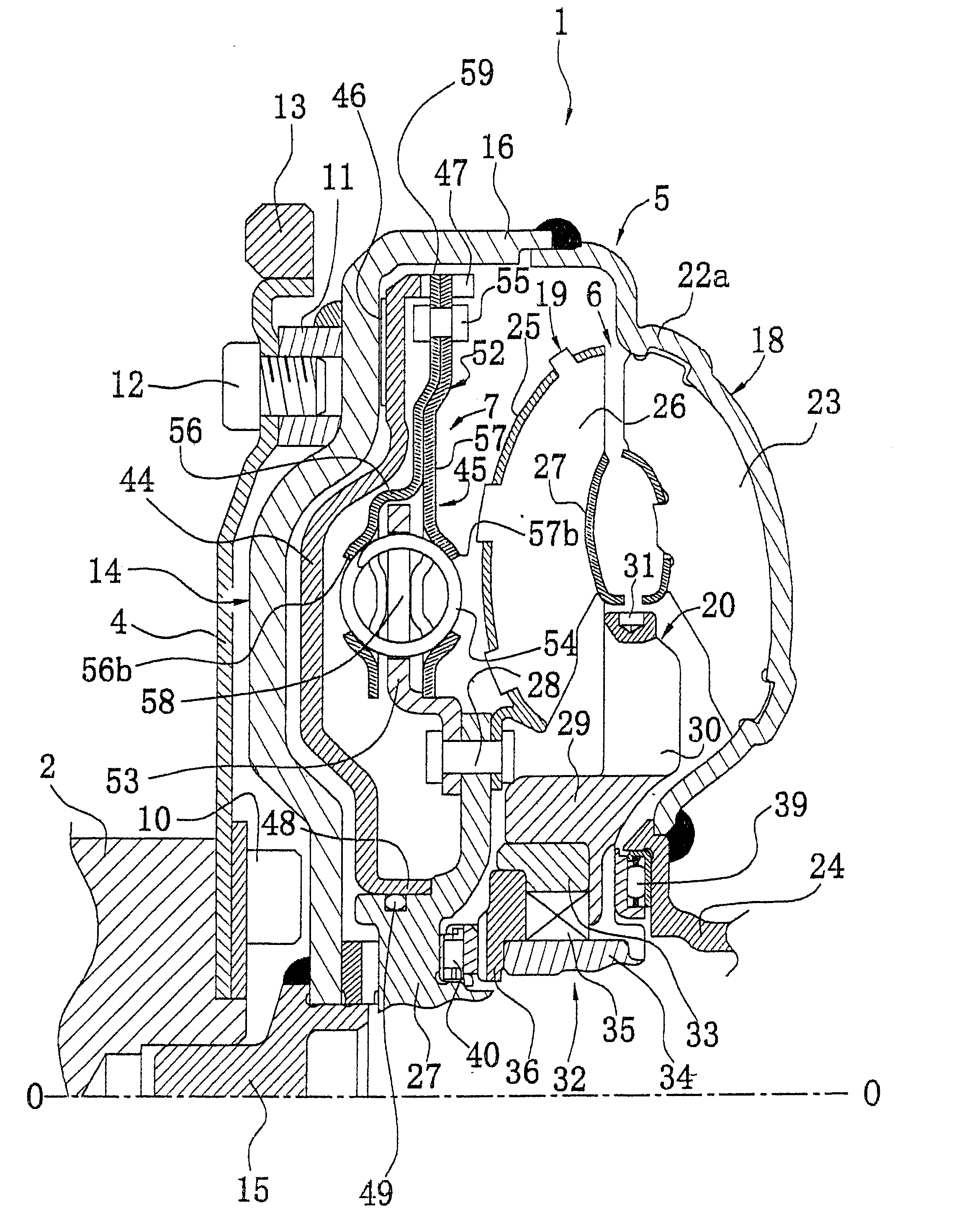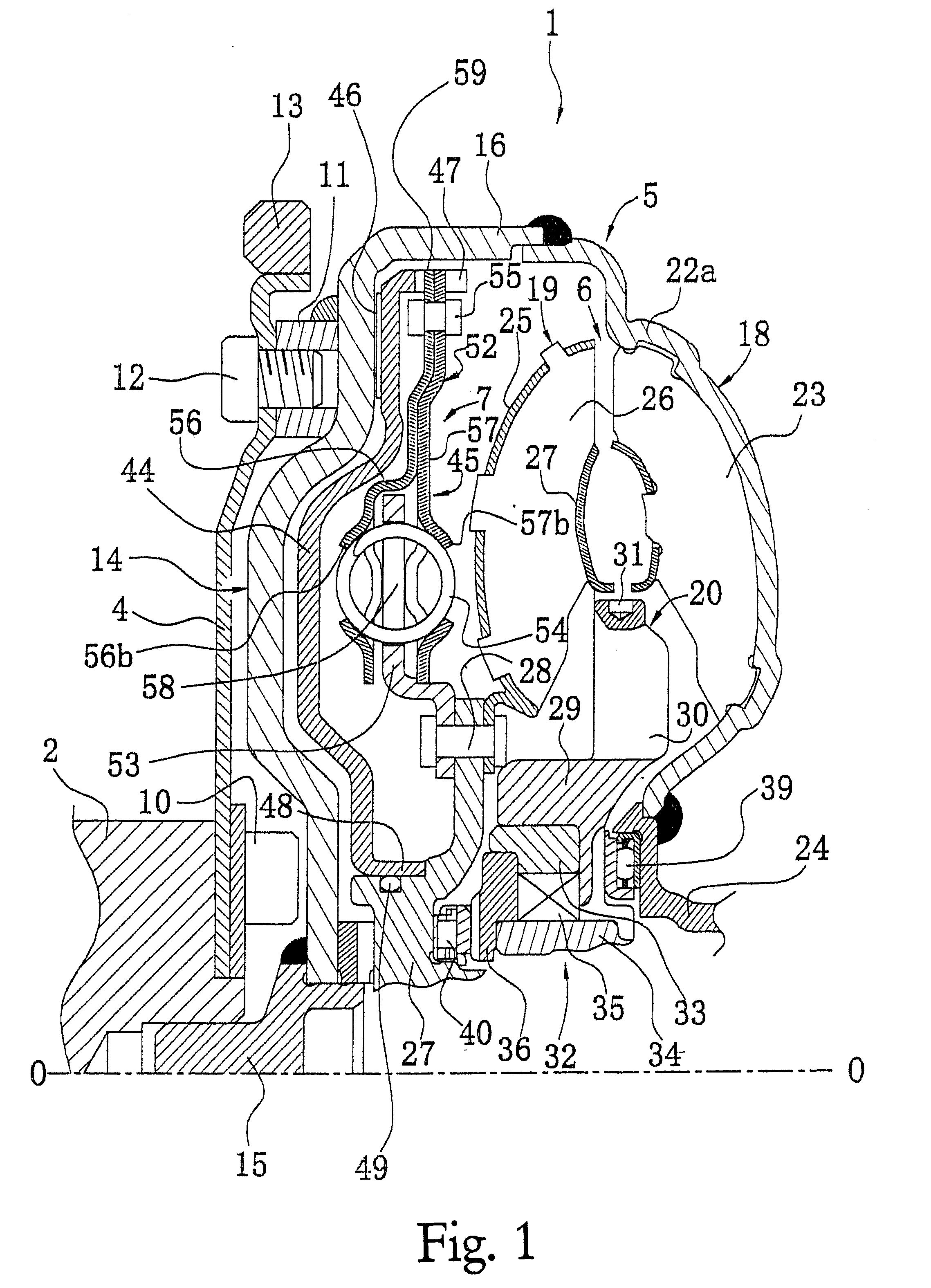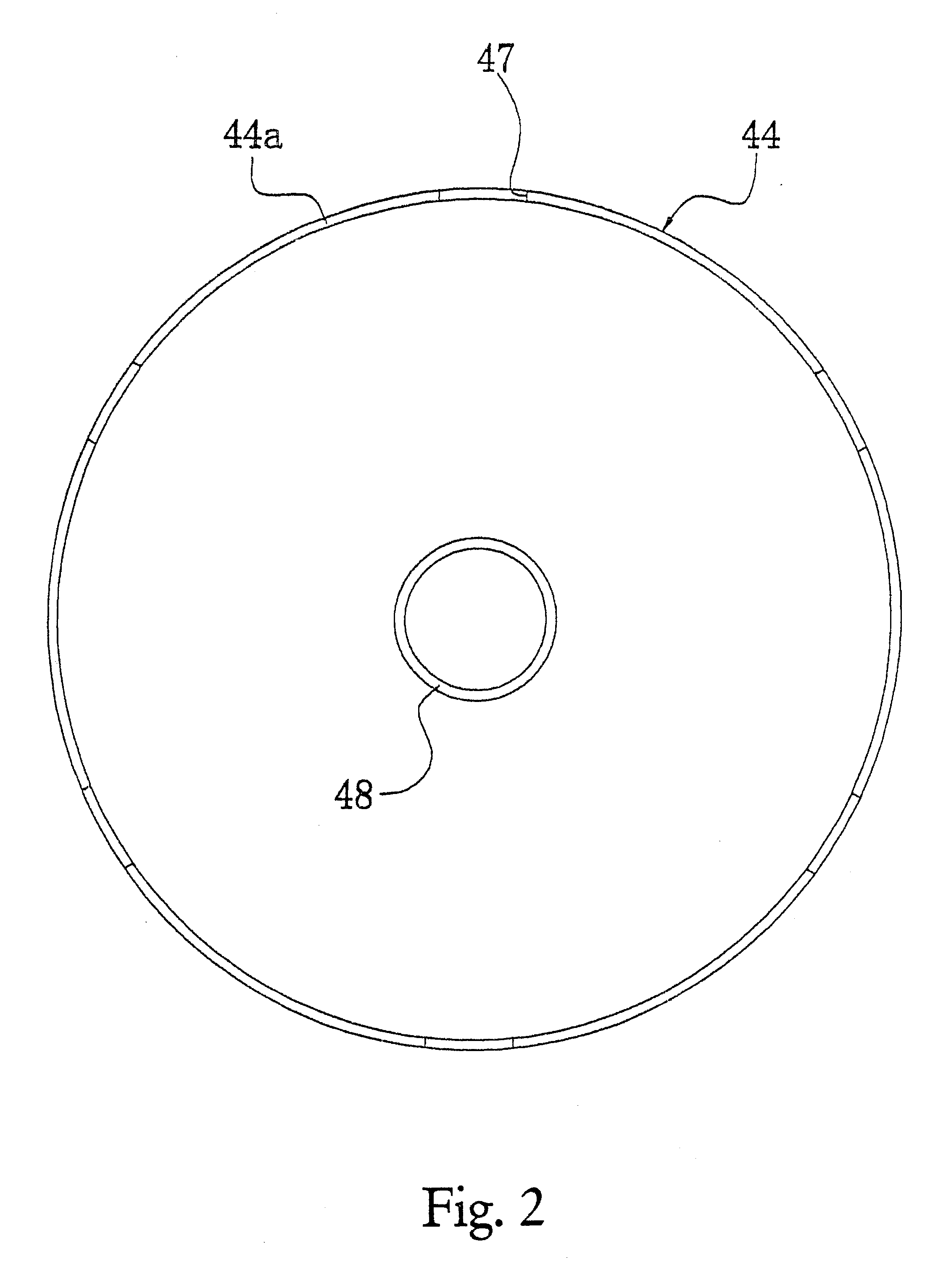Lock-up damper of torque converter
a torque converter and lock-up mechanism technology, which is applied in the direction of rotary clutches, fluid couplings, gearing, etc., can solve the problems of reducing the total amount of stresses applied around the receiving openings, reducing the weight of the lock-up damper, and reducing the thickness of the output member. , the effect of reducing the thickness of the output member
- Summary
- Abstract
- Description
- Claims
- Application Information
AI Technical Summary
Benefits of technology
Problems solved by technology
Method used
Image
Examples
Embodiment Construction
The clutch plate 56 and the retaining plate 57 both having a plurality of cutouts 56e and 57e are utilized in the above described first embodiment. However, a retaining plate 157 of FIG. 12 having a plurality of elongated holes (openings) 57g instead of the cutouts 57e and a clutch plate (not shown) having a plurality of elongated holes instead of the cutouts 56e can be alternatively utilized.
Since the structure of a clutch plate having a plurality of elongated holes is similar to that of the retaining plate 157 having the plurality of elongated holes 57g the structure of the clutch plate having the elongated holes will not be described or illustrated in detail herein.
The retaining plate 157 has a plurality of radially outwardly extending projections 57a along the outer peripheral region thereof. Preferably, the retaining plate 157 has six projections. Each projection 57a has a hole 57c through which a rivet 55 is received to attach the retaining plate 157 to a clutch plate via oppo...
PUM
 Login to View More
Login to View More Abstract
Description
Claims
Application Information
 Login to View More
Login to View More - R&D
- Intellectual Property
- Life Sciences
- Materials
- Tech Scout
- Unparalleled Data Quality
- Higher Quality Content
- 60% Fewer Hallucinations
Browse by: Latest US Patents, China's latest patents, Technical Efficacy Thesaurus, Application Domain, Technology Topic, Popular Technical Reports.
© 2025 PatSnap. All rights reserved.Legal|Privacy policy|Modern Slavery Act Transparency Statement|Sitemap|About US| Contact US: help@patsnap.com



